Top 10 Highlights on the Cotswold Way
By Mark Wright
Stretching just over 100 miles from the medieval market town of Chipping Campden in the North Cotswolds to the historic City of Bath in Somerset, the Cotswold Way is one of England’s finest National Trails. The Cotswold landscape is an officially designated Area of Outstanding Natural Beauty and its enthralling blend of parkland, neat fields with dry-stone walls and patches of lush woodland are testament to that.
Choose to walk the whole route in one holiday over 6 to 11 days, or savour it over two shorter 5 day adventures with the northern ‘Escarpment and Villages‘ section and southern ‘Long Barrows and Baths‘.
Could the Cotswold Way be your next great adventure? To help you decide we’ve put together our Top 10 Highlights on the Cotswold Way. It could easily have been double, it’s such a beautiful trail. Some can be enjoyed as part of your walking day, others will probably require a rest day to fully appreciate them.
Chipping Campden
Chipping Campden embodies quintessential English charm with its honey-coloured limestone buildings, quaint streets, and rich history. As the starting point of the Cotswold Way, this historic market town captivates visitors with its beauty and cultural significance.
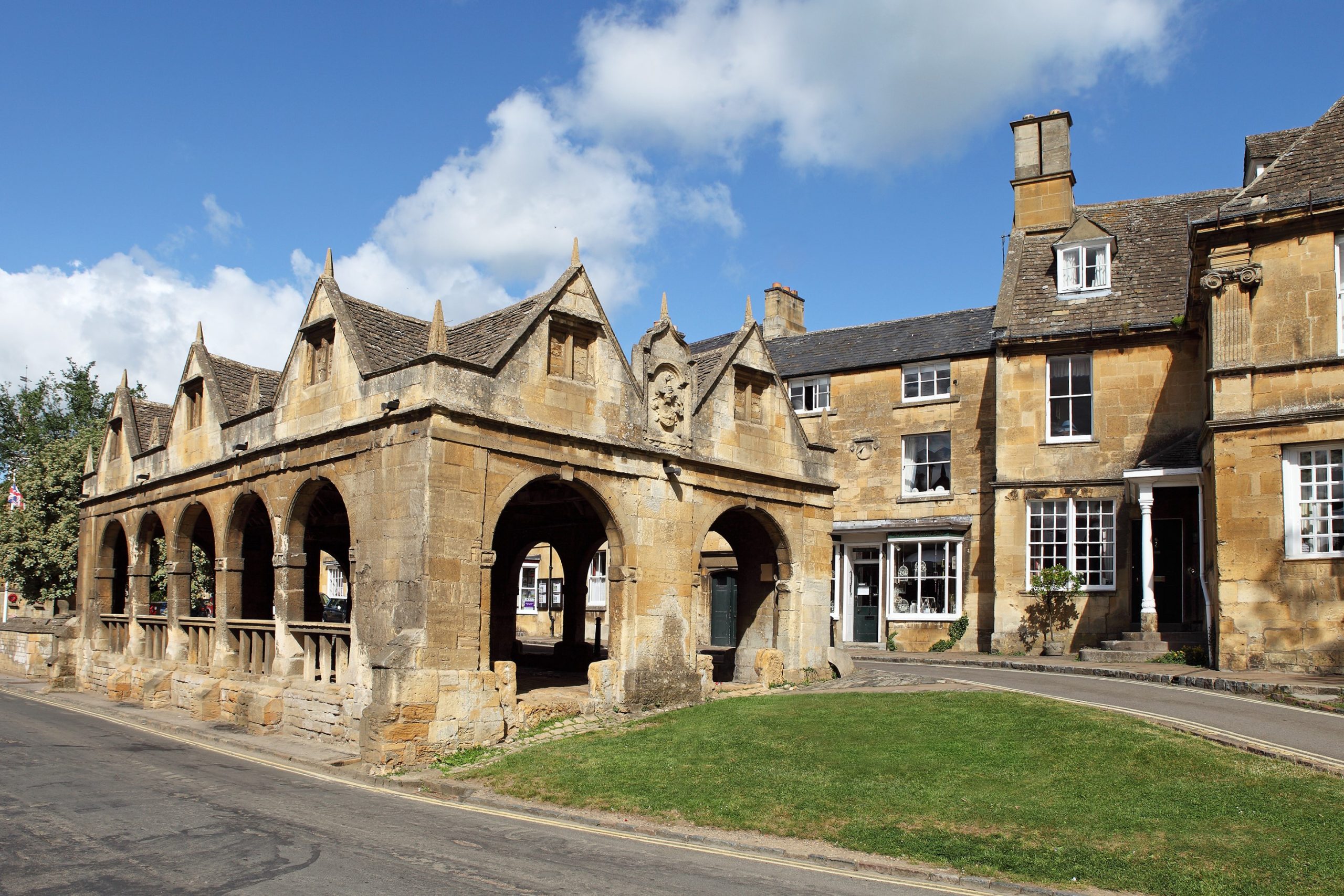
At the heart of Chipping Campden stands the iconic Market Hall, a beautifully preserved 17th-century structure that served as a shelter for traders. Today, the Market Hall is not just a symbol of the town’s history but also a gathering spot and a focal point for events and celebrations.
Walking through the town’s streets, visitors encounter a wealth of historic buildings, many of which showcase the distinctive Cotswold stone architecture. The High Street, lined with charming shops, cafes, and traditional pubs, is deserving of leisurely exploration. St. James’ Church, with its medieval architecture and beautiful stained glass windows, is a testament to the town’s religious heritage and is a must-visit for history enthusiasts.
Chipping Campden also boasts ties to the Arts and Crafts movement, exemplified by the work of C.R. Ashbee and the Guild of Handicrafts. The Court Barn Museum showcases the craftsmanship and design principles of this influential movement, providing insight into its impact on the region’s artistic legacy.
Broadway Tower
Broadway Tower stands proudly on Beacon Hill, a magnificent vantage point commanding breathtaking views across the Cotswolds. This iconic structure has earned its place as one of the most captivating landmarks along the Cotswold Way.
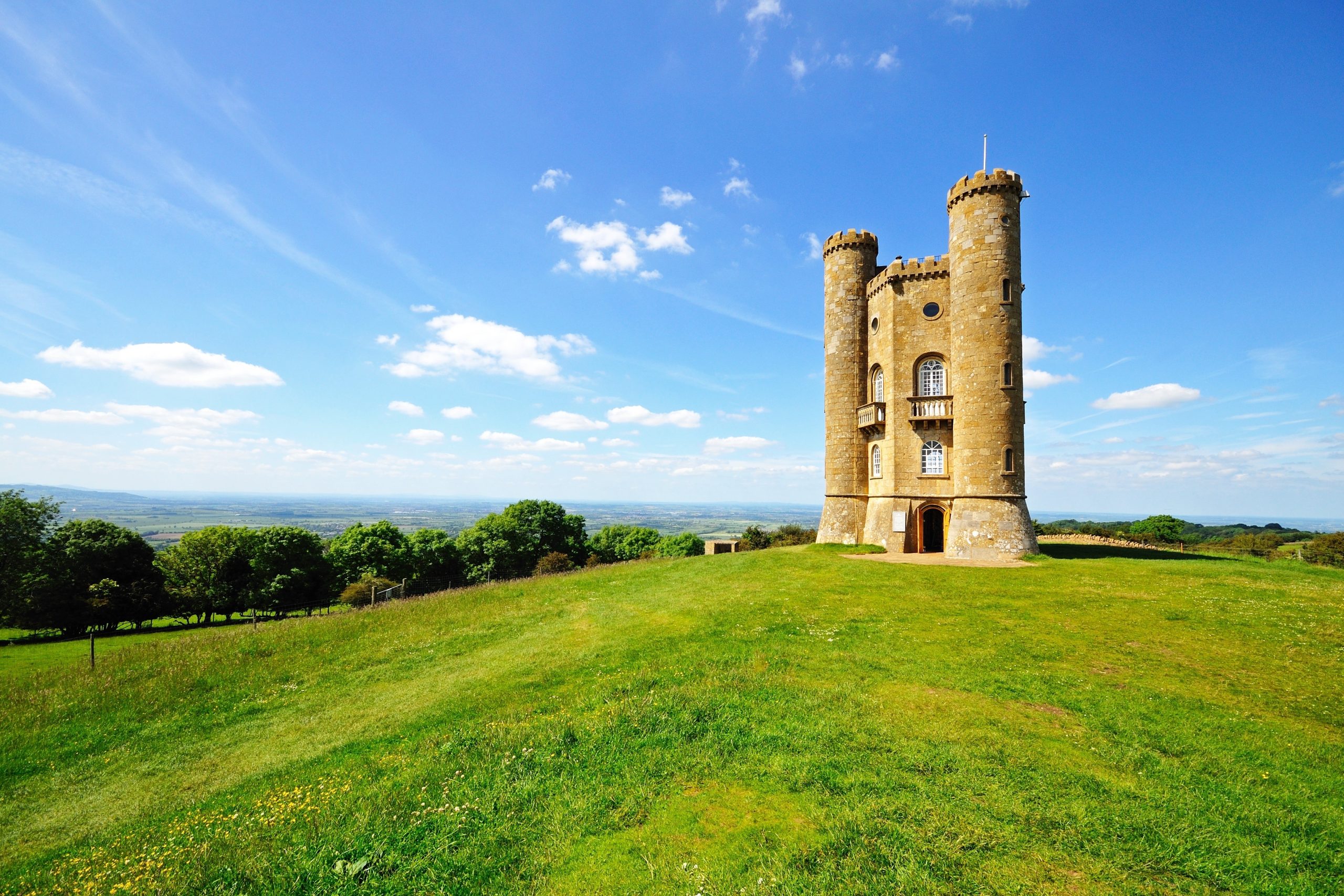
The brainchild of the renowned landscape designer Capability Brown, the tower, constructed in the late 18th century, was intended to resemble a Saxon castle. Its unique design and strategic hilltop location make it a magnet for visitors seeking panoramic views over a vast expanse of rolling hills, picturesque villages, and lush greenery.
The tower’s interior, accessible to the public, houses an exhibition that delves into its history and significance. Visitors can explore three floors of informative displays, historical artefacts, and artworks, offering a glimpse into the tower’s past and the people who were drawn to it.
The tower’s strategic location along the Cotswold Way makes it a popular rest spot for walkers. The sense of achievement upon reaching its summit and the awe-inspiring views make it a highlight of the trail. Whether visited for its historical significance, architectural charm, or simply for the stunning views, Broadway Tower stands tall as an emblem of the Cotswold Way’s allure.
Cleeve Hill
Standing at 1,080 feet Cleeve Hill is the highest point in the Cotswolds. This prominent vantage point provides an unparalleled opportunity to witness the vastness of the surrounding countryside.
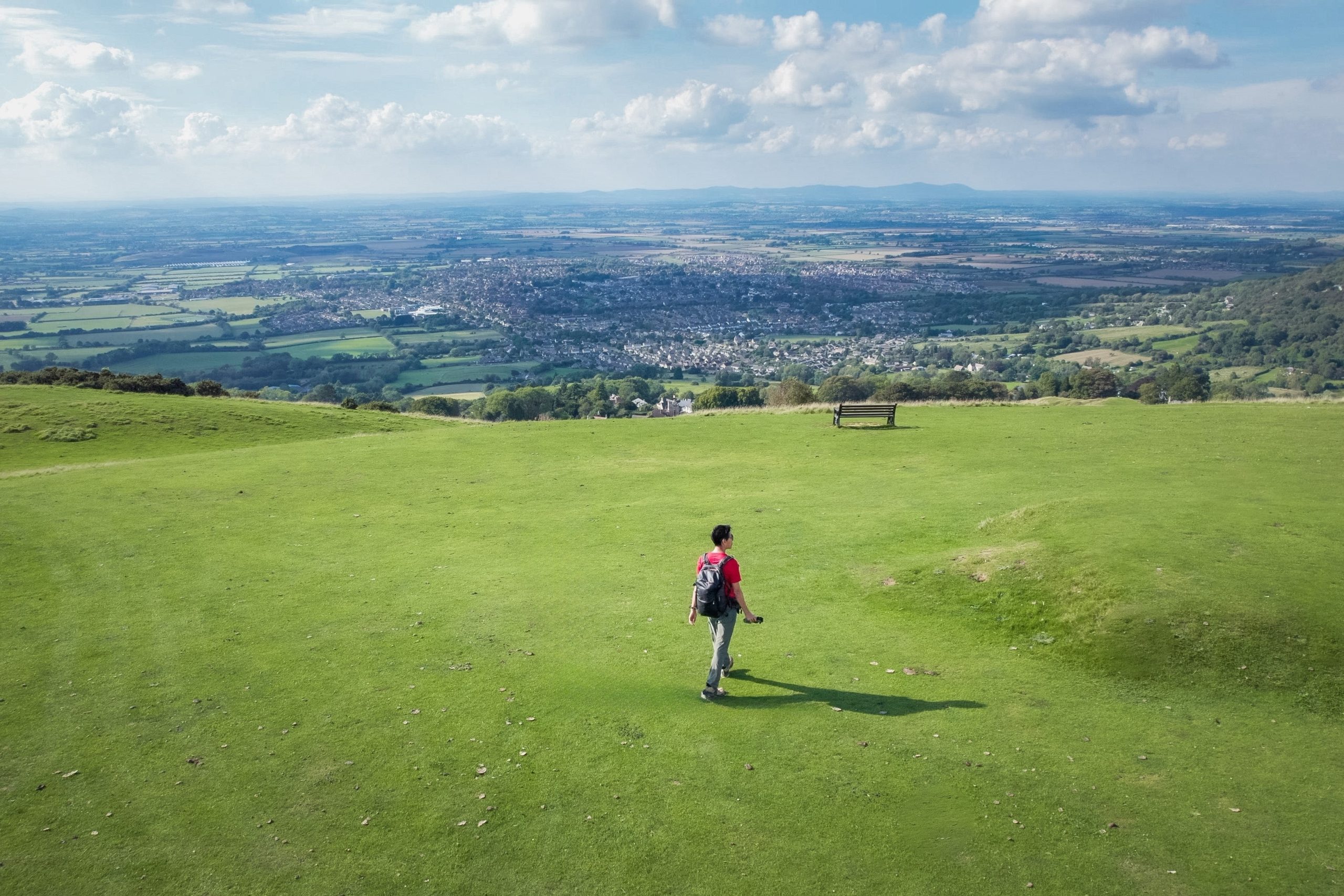
The expansive vista encompasses the Vale of Evesham, the Malvern Hills, and even glimpses of the Welsh mountains on clear days. This unobstructed view across rolling hills, patchwork fields, and charming villages creates a sense of awe and appreciation for the beauty of the Cotswolds.
The hill itself boasts an array of flora and fauna. Its slopes are adorned with carpets of wildflowers during the spring and summer months, creating a vibrant and colourful landscape. The diverse habitat also supports various wildlife, making it a haven for birdwatchers and nature enthusiasts seeking glimpses of Ring Ouzels, Wheatears, Whitethroats and other bird species.
For many walkers, the majesty of Cleeve Hill, and the reward of the panoramic views serves as a highlight of their Cotswold Way journey.
Sudeley Castle
Sudeley Castle, nestled in the picturesque Cotswold Hills near Winchcombe, is a treasure trove of history, romance, and architectural grandeur.
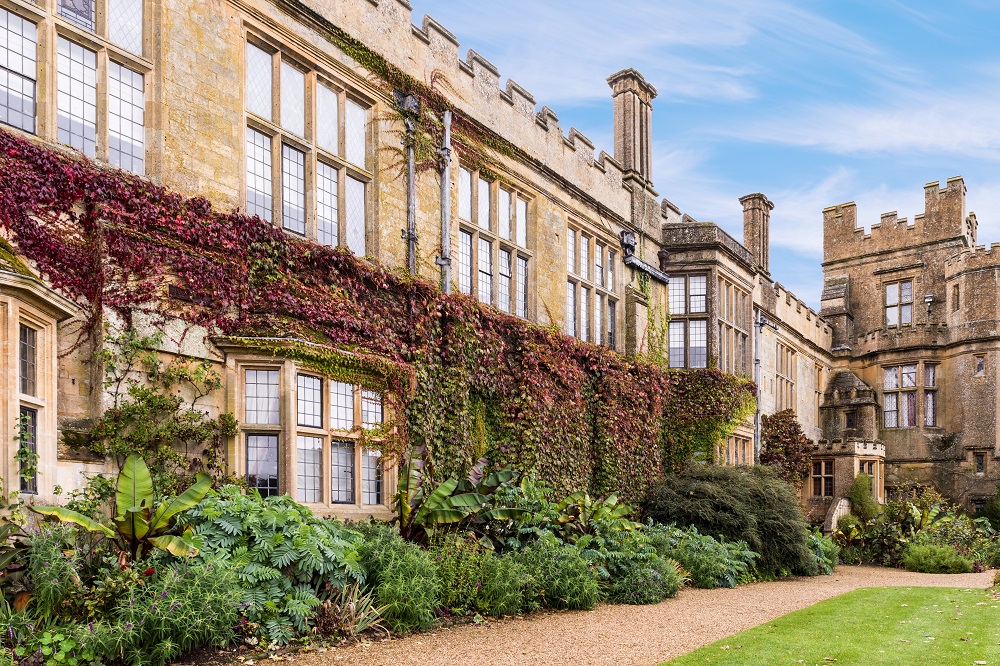
Thought to originally be the site of a 12th-century fortified manor house, Sudeley’s transformation over the centuries saw it become a royal residence, with connections to prominent historical figures, most notably Queen Katherine Parr, the last wife of King Henry VIII. The castle’s history is richly woven with stories of royal visits and political intrigue.
The castle’s stunning gardens provide a tranquil backdrop to its history-laden architecture. Visitors can explore the Queen’s Garden, named after four of England’s Queens – Anne Boleyn, Katherine Parr, Lady Jane Grey and Elizabeth I. This is just one of ten magnificent, award-winning gardens in the castle grounds.
Sudeley Castle’s interior is equally captivating, with lavishly decorated rooms housing priceless antiques, exquisite artwork, and historical artefacts. The castle’s exhibitions showcase its royal connections, including memorabilia related to Queen Katherine Parr, along with rare collections that offer insights into the lives of those who once called Sudeley home.
Belas Knap Long Barrow
Situated on Cleeve Hill near Winchcombe, this Neolithic burial mound, believed to date back to around 3000 BC, is a striking example of prehistoric architecture and spiritual significance.
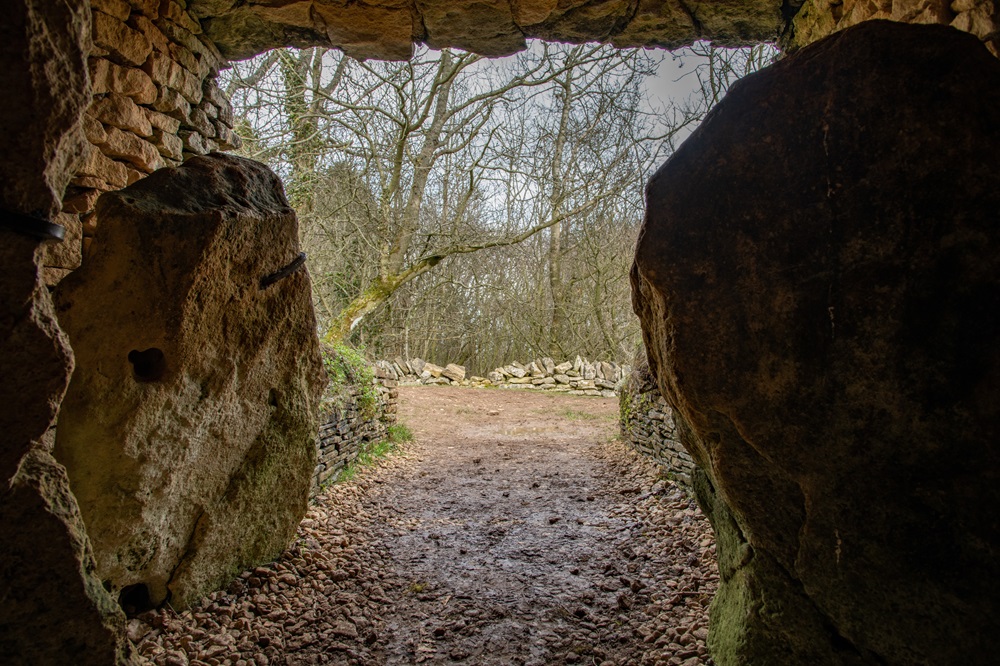
Belas Knap Long Barrow served as a communal burial site, housing the remains of dozens of individuals. Archaeological excavations have uncovered human skeletons, animal bones, and other artefacts, shedding light on the rituals and customs of Neolithic societies.
The long barrow is accessible to the public, allowing visitors to explore its chambers and contemplate the mysteries of the past and appreciate the enduring legacy of our ancestors that once thrived in the Cotswolds.
Hailes Abbey
Founded in 1246 by Richard, Earl of Cornwall, brother of King Henry III, Hailes Abbey was one of the last Cistercian houses to be founded in England. In 1270 Richard’s son Edmund presented the monks with a phial believed to contain drops of Christ’s blood. This contributed to its reputation as a pilgrimage site, attracting devout visitors seeking spiritual solace.
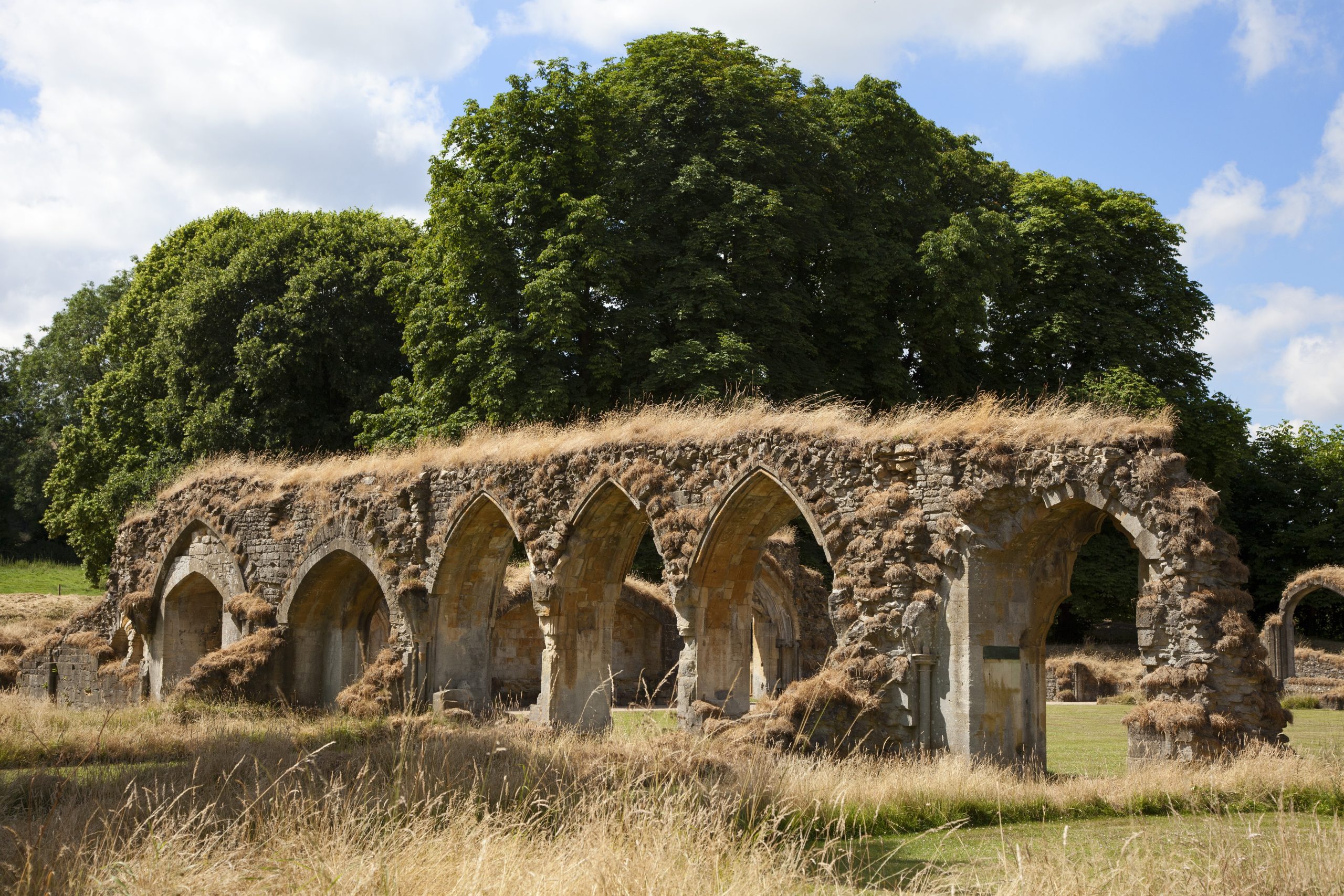
The abbey’s architecture, characterised by Gothic design elements and graceful arches, reflected the Cistercian order’s commitment to simplicity and spirituality.
Hailes Abbey’s history is intertwined with moments of religious and political significance. It became a site of contention during the Reformation, leading to its eventual dissolution in 1539. The dissolution saw the abbey’s demise, with much of its wealth seized, its buildings dismantled, and the monks dispersed.
Today, the ruins of Hailes Abbey exude a tranquil atmosphere, inviting visitors to explore its remains and reflect on its fascinating past. The site’s scenic setting, surrounded by lush greenery adds to its attraction.
Painswick Rococo Garden
This enchanting garden, restored to its former glory, offers visitors a delightful journey through the elegance and playfulness of the Rococo era.
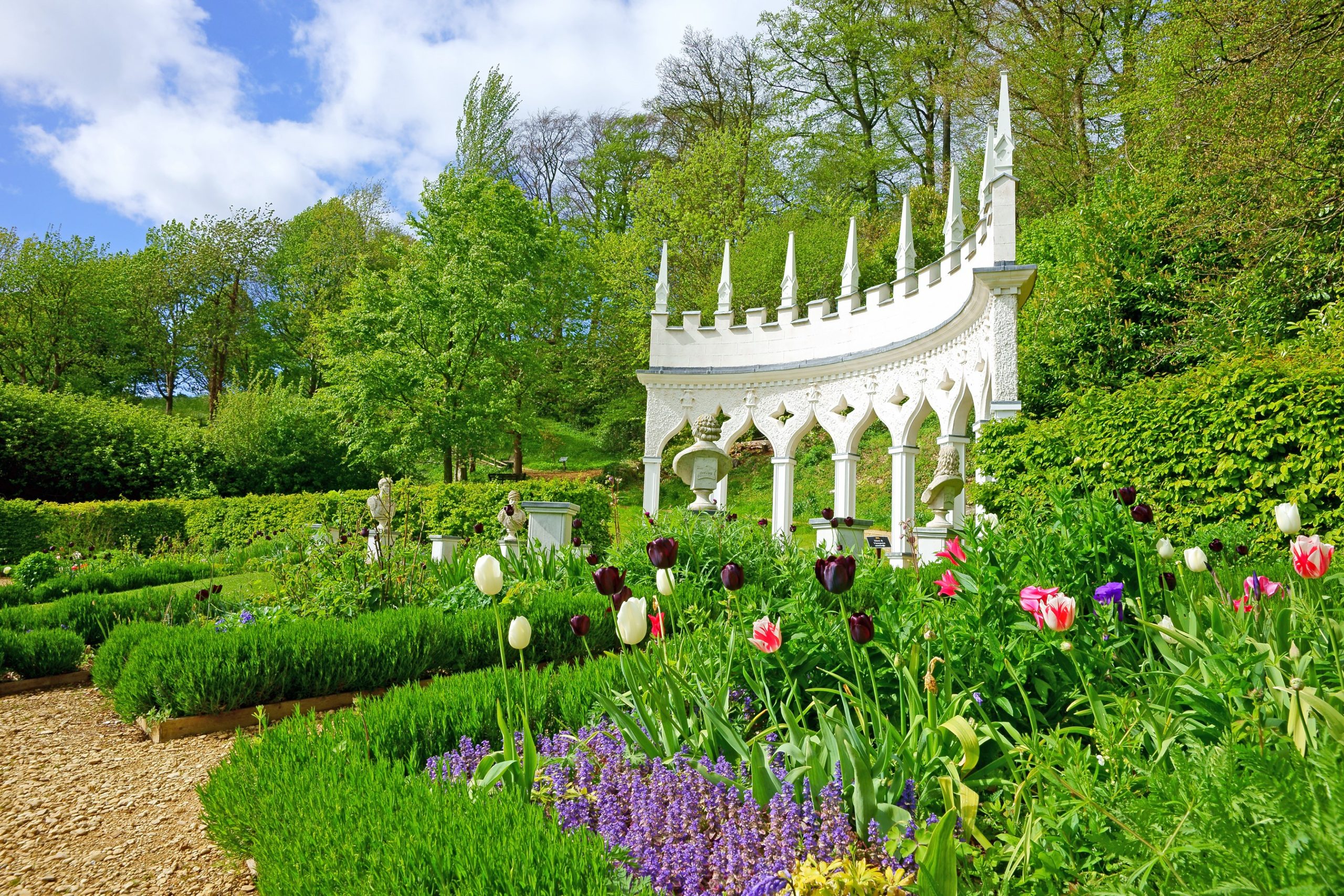
Designed in the 1740s, the garden was originally created as a pleasure garden for the wealthy to entertain guests and revel in the fashionable and ornate Rococo style. The design principles of the Rococo period are evident throughout the garden, characterised by its asymmetrical layouts, playful architectural features, and extravagant ornamentation.
One of the garden’s most iconic features is the Red House, a rustic pavilion adorned with charming painted decorations, showcasing the Rococo taste for whimsical designs and vibrant colours. The Red House, along with other follies and structures scattered throughout the garden, adds to the playful and fanciful atmosphere that defines the Rococo style.
Throughout the seasons, the garden’s varied plantings offer a visual feast, from the vibrant bursts of spring blooms to the rich colours of autumn foliage. The peaceful setting invites visitors to stroll leisurely, enjoy picnics on the lawns, and appreciate the harmony between natural beauty and man-made artistry.
The Tyndale Monument
The Tyndale Monument stands on a hill above the village of North Nibley. Erected in 1866, this striking tower is dedicated to the memory of William Tyndale, and commemorates his significant contribution to the translation of the Bible into English.
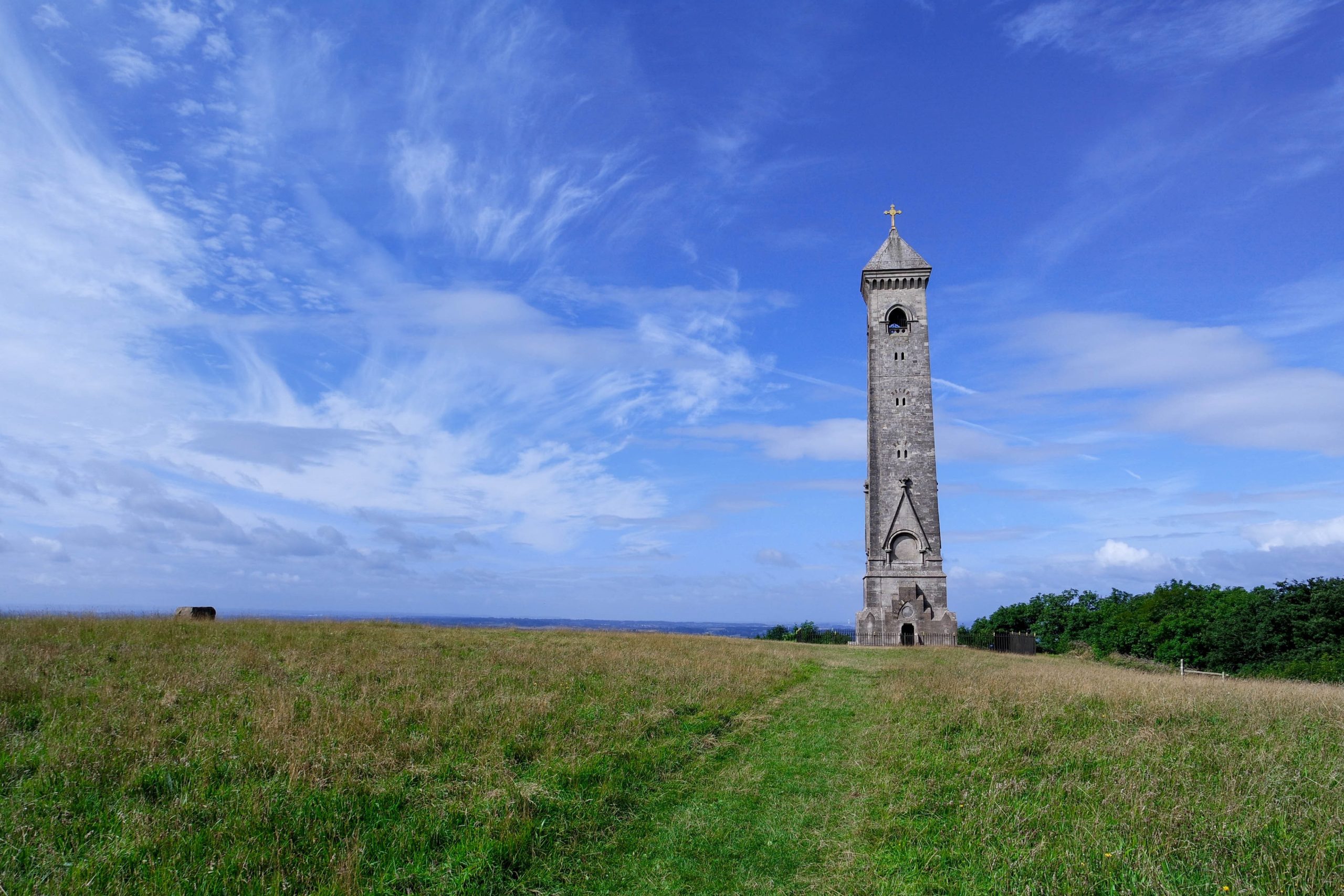
William Tyndale, a scholar and theologian, devoted his time to translating the Bible from its original Greek and Hebrew texts into English during the early 16th century. His passionate belief in making the Scriptures accessible to the common people, despite facing opposition from religious authorities, laid the groundwork for future English translations.
Forbidden to work in England, Tyndale travelled to Cologne, then later Worms where between 1525 and 1535 he translated and printed in English the New Testament and half the Old Testament. Condemned as a heretic, Tynedale was strangled to death while tied at the stake, in 1536.
Visitors to the Tyndale Monument can climb its spiral staircase, reaching the top to be rewarded with stunning views across Berkeley Vale and the river Severn to the Black Mountains.
Cam Long Down
Cam Long Down rises to approximately 869 feet and provides visitors with breathtaking views across the surrounding Gloucestershire countryside. Here visitors are able to appreciate the undulating landscapes of the Severn Vale, the Forest of Dean, and the distant Malvern Hills. On a clear day, the views extend far and wide, offering a picturesque backdrop that showcases the beauty of the Cotswolds.
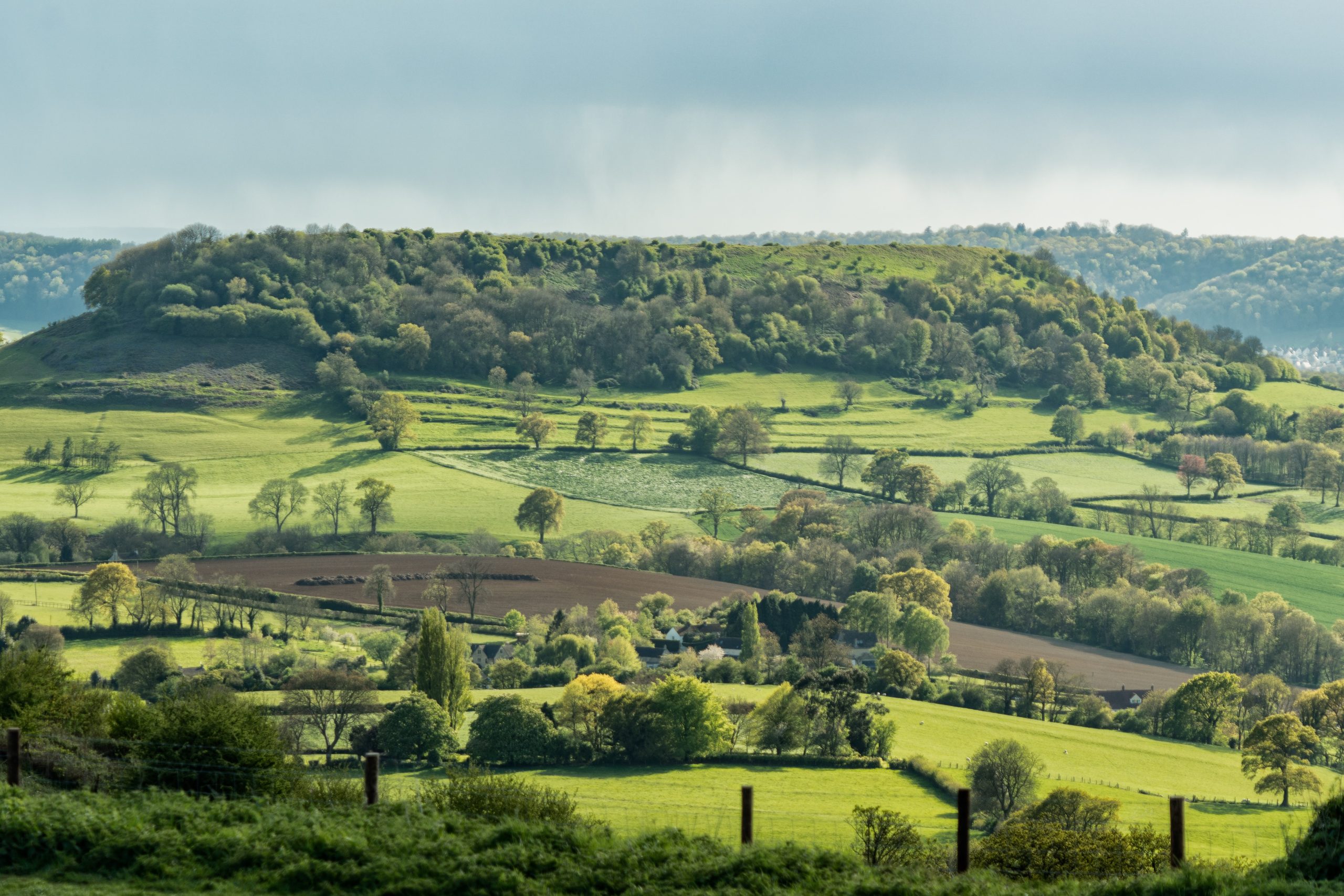
The trail leading to the summit passes through scenic woodlands and open grassy slopes, providing an opportunity to appreciate the diverse flora and fauna of the area.
For nature enthusiasts, the hill is a haven for wildlife, offering chances to spot various bird species and other animals amidst the picturesque landscape. Its tranquil setting and panoramic views make it an excellent location to sit for a while and soak up the serenity of the Cotswold countryside.
Bath
One of Bath’s most iconic attractions is of course the Roman Baths, an ancient complex showcasing remarkably preserved Roman remains, including the Great Bath, temple ruins, and many artefacts. Visitors can immerse themselves in the history of the Roman occupation, learn about the rituals and bathing practices of that era, and admire the architectural marvels that have stood the test of time.
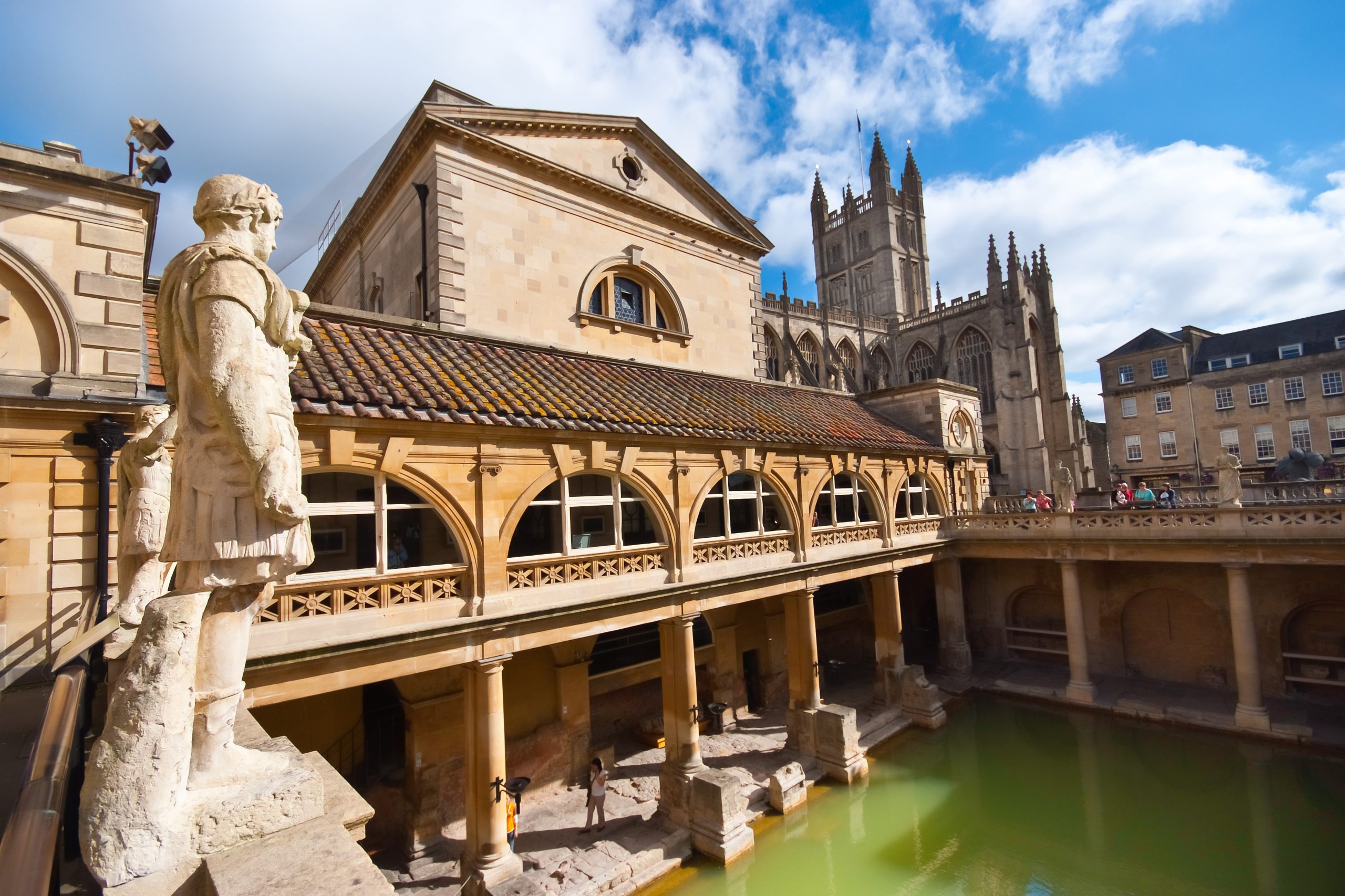
The city’s Georgian architecture, notably the Royal Crescent and the Circus, reflects Bath’s 18th-century elegance and sophistication. The Royal Crescent, a semi-circular row of Georgian townhouses, offers a glimpse into the city’s architectural grandeur and serves as a prime example of Georgian urban design. The Circus, a circular arrangement of townhouses, showcases the architectural prowess of John Wood the Elder, creating a harmonious blend of design and symmetry.
Bath’s natural hot springs, known for their therapeutic properties, have been enjoyed for millennia. The modern-day Thermae Bath Spa allows visitors to experience the healing waters in a contemporary setting, complete with rooftop pools offering panoramic views of the city skyline.
Bath’s vibrant cultural scene includes museums, galleries, theatres, and festivals, adding a contemporary flair to its rich heritage.
Each of these highlights offers its own unique charm, historical significance, or scenic beauty, and combined they ensure walking the Cotswold Way is an unforgettable experience. For further information and to book your 2024 adventure email us [email protected] or call us on 017687 72335 to speak with one of our walking holiday experts.